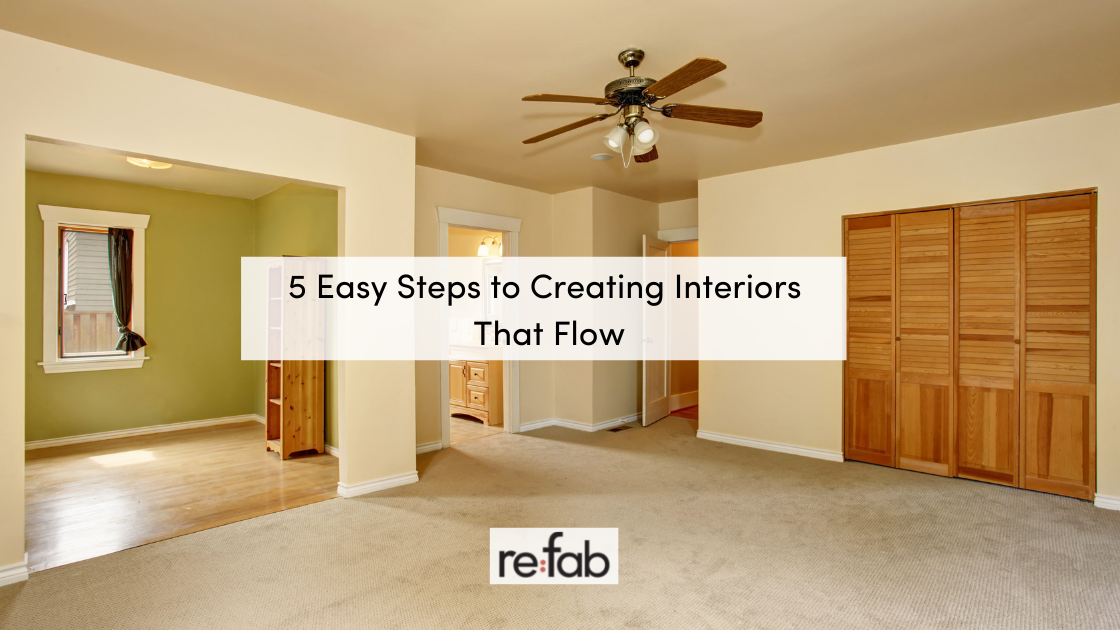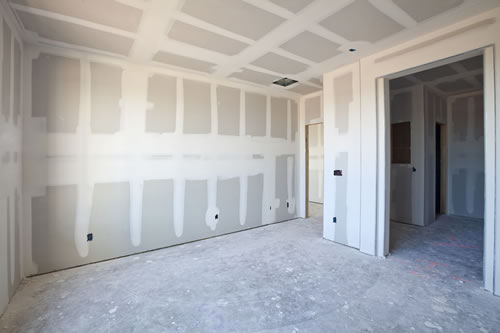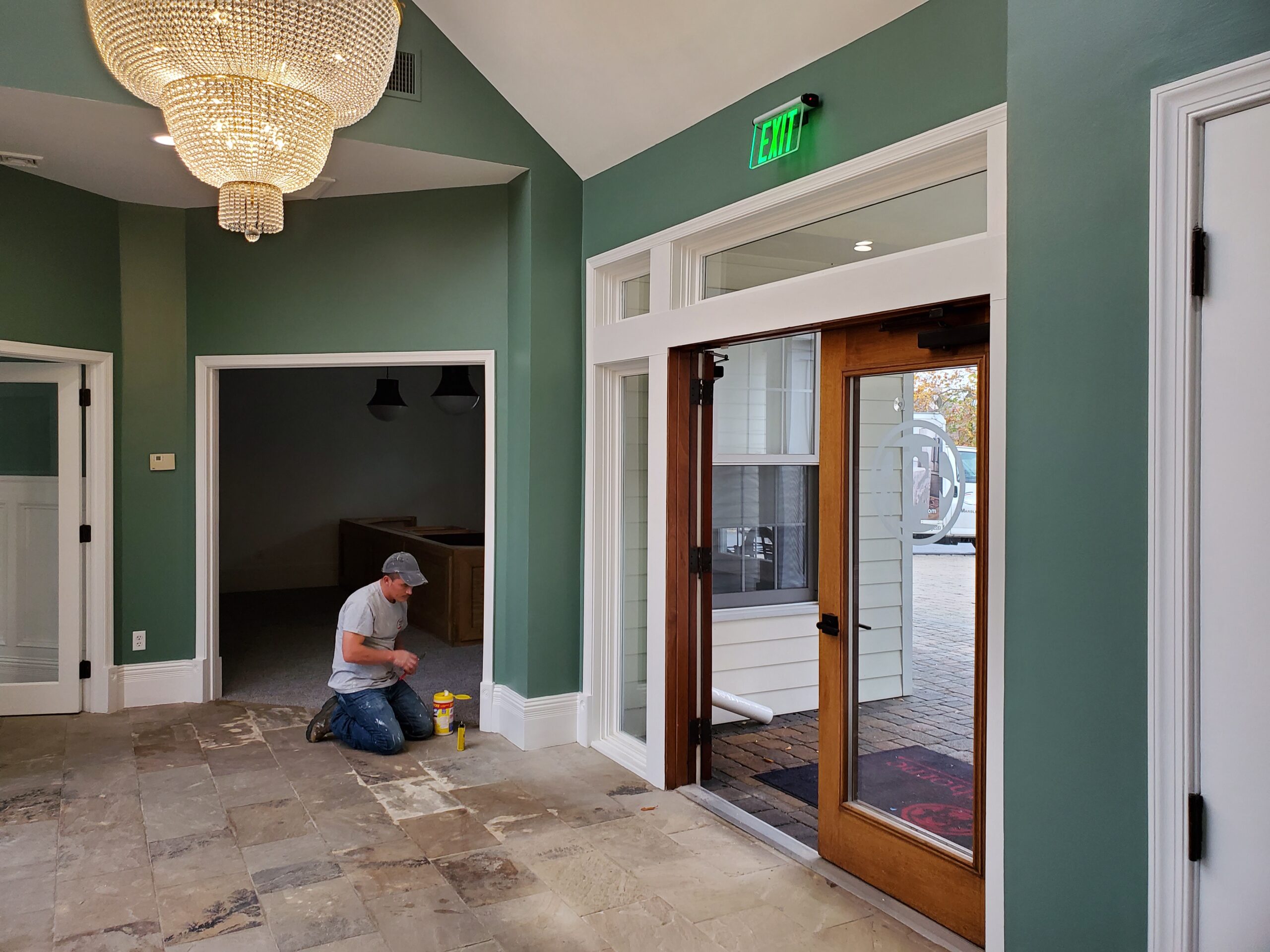
If you’re struggling with how to incorporate color into the different rooms in your home for a cohesive look, Debbie & Snowy from New England Home & Garden: Family Life Through The Seasons have pulled together 5 tips to help you harmonize your color choices!
You’ve probably had the experience of walking into a home where all the rooms seemed to work really well together, one flowing seamlessly into the next. This visually pleasing space undoubtedly made you feel comfortable. You may not have been able to put your finger on exactly why you felt this way, but chances are it was due, in part, to flow.
This article will dive into exactly what flow is, why it’s important, and how to achieve it in an easy, five-step process.

Image courtesy of Home Interior Design 360
The white and blue paint scheme above serves as backdrop for orange accents that are carried from room to room. Accents of blue in the pillows and furniture also help unify the two rooms.
What is Flow?
Flow is a sense of unity within your home, where all the rooms tie together in a pleasing way. It’s an important element in creating interiors that feel inviting and comfortable. Paint is one of the easiest and most cost effective ways to create flow in your home. By selecting several complementary paint colors, one or two accent colors, and a overarching trim color, you can create a palette that connects each space.
Step 1: Find Inspiration
What colors speak to you? This is much easier to determine than it may sound. Which colors do you always seem to gravitate toward? Look at your favorite color, then find its complementary hues. This can help guide you to the perfect interior palette.
If you are having trouble coming up with favorites, try another method. Look around your home. Use a favorite fabric, piece of art, or an area rug as the inspiration to create a color palette. Look also at your wardrobe. Do certain colors stand out? If you’re still stumped, let nature guide you. Did you see the Grand Canyon, either in person or in pictures, and fall in love with the countless shades of coral, russet, and vermilion? Maybe an image of Greece led to your love of blue and white. Inspiration can come from anywhere.

The rooster toile fabric inspired the color palette for our sample interior below. This five-step process enabled the homeowner to make design choices that created flow.
Step 2: Choose a Color Palette
There are many sources that can help you build your color palette. Before turning to your paint professionals, spend time researching online. Better Homes and Gardens magazine shows dozens of color palettes on Pinterest. Find your favorites and create your own board specific to your project. If you’re like us, several palettes will speak to you and you may find yourself wondering which one to choose. Remember: don’t be too influenced by current fads. Stick with a timeless color scheme and you won’t be disappointed.

Color specialists will help you pull the tones you want from your inspiration piece. They are trained to select complementary colors from among thousands of chips. Feel free to deviate from your palette if you want different accent colors. In the example above, the homeowner chose red and blue accents rather than orange.
Consider Existing Fabrics, Window Treatments, Flooring, and Woodwork
When choosing your interior palette, consider existing furnishings, like sofas, chairs, and window fabrics that you intend to keep. Also keep in mind permanent features like wood or tile flooring, carpeting, and fireplace material that may affect your color decisions.
Step 3: Sketch a Floorplan
Sketch a simple floorplan of your house, no drawing skills needed, simple boxes will do!

Step 4: Paint Plan
Get out your childrens’ crayons or colored pencils, and using your selected color palette, color in the rooms. These are your wall colors. Begin with your most-used, largest, or favorite room, and decide its color first.

Keeping your walls neutral will allow greater use of colorful accents in fabrics, art, and decorative objects. Taupe is a good choice for a family/great room because it’s a perfect canvas for blues, reds, greens, corals, and other accent colors. Use white for trim throughout the house to unify the spaces. We like Benjamin Moore Simply White.
If the rooms on your main floor are open to each other, using one paint color helps to unify the spaces and avoid a choppy feeling. Push away the feeling that each room needs to be a different color. Instead, embrace various accent colors!
Step 5: Pulling It All Together
You may experience an “ah ha” moment when you pull your palette together and visualize the unified spaces with their accent colors. In the home below, tan and straw walls provide a neutral canvas for red and blue accents.

Carry blue and red into the dining room as accent colors.
Following your heart and avoiding fads will lead you to a color palette that perfectly expresses your aesthetic. We hope this five-step process provides you with a simple guide to creating interiors that flow.
Need Help? Call re:fab today!
Recommended Reading:
Krims, Bonnie Rosser. The Perfect Palette: Fifty Inspired Color Plans for Painting Every Room in Your Home.
About the Authors
_(1)1.png)
As West Coast transplants, Debbie Green and Snowy Eischen met by happenstance in their small Massachusetts town, and discovered they had a lot in common, including a vibrant family life, and a mutual love of creating beautiful homes and gardens. The seeds of their blog, New England Home and Garden: Family Life Through the Seasons were planted when they began attending antiques fairs, show houses, open gardens, and planning unique and creative parties for families in their village. They’re passionate about photography, styling, and home staging, all with New England flair!








